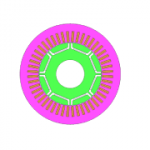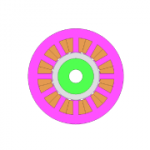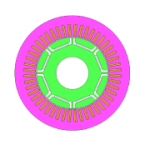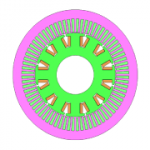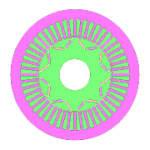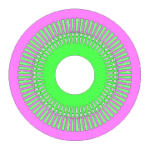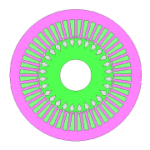Motor
The advantages of JMAG to electric machine analysis have been proven time and again. Even though electric machines are considered mature products, they still face new demands for higher performance. These demands have increased competition among machine designers to extract the most performance from a design. After more than 100 years, most of the easy innovations have already been made and deriving further performance gains requires finite element analysis (FEA) to identify previously overlooked or underestimated aspects of machine design. Since JMAG’s release, it has been utilized in a number of motor development projects around the world. Our accumulated knowledge and experience in motor design enables us to provide powerful yet easy to use simulation technologies.
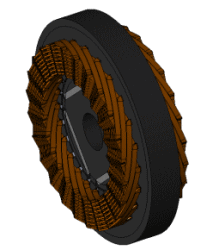
Capabilities
Evaluate complex phenomena such as thermal demagnetization and vibration in addition to basic characteristics such as induced voltage, torque, and inductance.
Typical Analyses
Obtain induced voltage, load torque, cogging torque, inductance, flux linkage, iron losses, coil losses, magnet loss, permeance, parameter sensitivity, equivalent circuit model extraction, heat generation, temperature distribution, eccentricity, stress, vibrations, radiated sound, magnetization, demagnetization, and skew effects.
Features Supporting Motor Design
A full range of features allow sophisticated analyses to be performed with ease.
JMAG-Express (Motor Template Tool)
- Use a built-in template to specify fundamental design parameters such geometry, materials, winding pattern and circuit excitation.
- Model creation takes minutes, and basic performance metrics such as torque vs speed and efficiency are generated in seconds.
- Users can also create custom templates for their own machines.
- Batch process parametric calculations.
- Templates for PMSMs, IMs, SRMs, brush motors, and universal motors are all included.
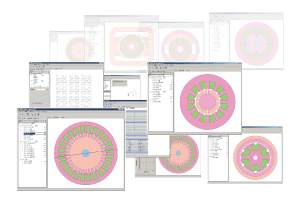
Coupled Control/Circuit Simulations
- Evaluate the actual drive effects by connecting the machine model to a circuit model.
- Model arbitrary circuit networks using inductors, capacitors, resistors or diodes.
- Perform analyses by linking to power electronic simulators such as PSIM and MATLAB/Simulink.
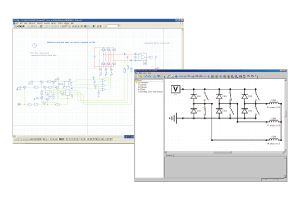
Meshing
- Accurate machine analysis requires an extremely high-quality mesh and JMAG’s mesh was specifically developed for machine analysis.
- No matter what geometry you use, just a few simple settings enables the automatic mesh generator to create a high quality mesh.
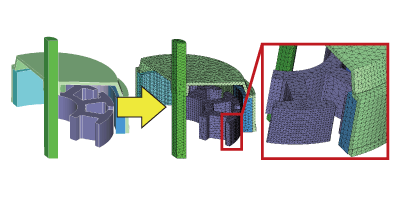
Material modeling
- The material database contains about 730 types of material properties (BH and loss) directly provided by the material manufactures.
- It is also possible to create a custom material and add it to the database.
- JMAG can account for anisotropy and stress in electrical steels.
- Alternating demagnetization and thermal demagnetization modeling in magnets is also possible.
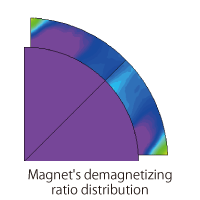
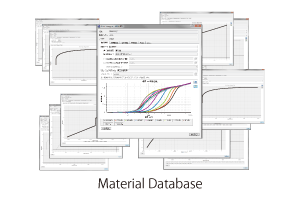
Coil Modeling
- Coil settings are easy to apply through an automatic coil winding tool or by manually specifying the coil’s input and output slot.
- Influence from the leakage flux on the coil ends or the surrounding housing can be precisely evaluated.
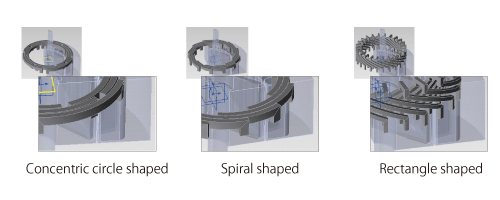
Efficiency Maps and Speed vs Torque Curves for Motors
- Speed versus torque characteristics can be calculated and efficiency maps generated by simply specifying the control type in the JMAG-RT Viewer for machines models created using the JMAG-RT tool.
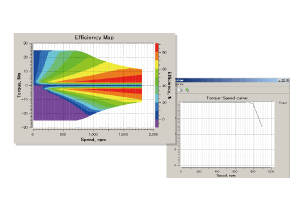
Loss Calculation
- The advanced material database allows users to automatically segregate iron losses into eddy current and hysteresis losses.
Inductance Calculation
- It is possible to automatically calculate a machine’s inductance.
- A special tool is included that calculates d/q axis inductance for permanent magnet motors.


